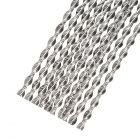Help & Advice Articles, Videos and How-to-Guides
Filter Articles
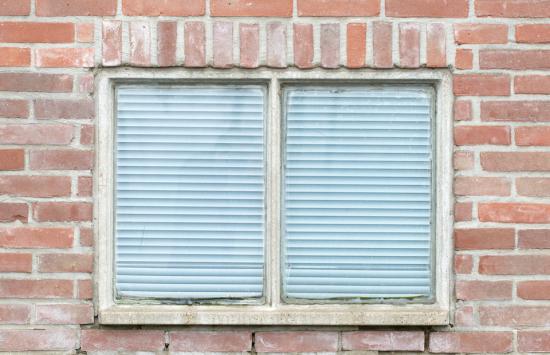
Lintel Repair – How to Guide
One of the common yet more serious structural problems that can affect a house is lintel failure. Above most windows and doors, you will have some form of lintel. Commonly these are brick lintels, steel lintels or concrete lintels. The first signs of a problem with a lintel are usually cracks in the masonry above the windows and doors.
What should you do if you notice cracks above a window or door? Can you repair lintels? Do you need to replace cracked lintels?
This guide aims to answer these questions and take you through how to repair lintels with helical spiral bars.
Menu
- Identifying damaged & failed lintels
- Window lintel repair
- Using Helical Bars for lintel repair
- Installing Helical Bars
- Best grout to use in lintel repair
- Creating a Lintel with helical bars
- Lintel Repair Costs
What is a lintel?
A lintel is a type of structural support used in buildings. They are installed horizontally above opening such as doors and windows to support the load of the structure above. Lintels can be made of bricks, concrete, timber or metal. They provide additional strength at weaker points - if a load-bearing lintel is damaged, then it requires attention.
When do I need to repair a lintel?
When dealing with any cracks in a wall, it’s important to establish the root cause of the cracking. When the cracks are above doors and windows, the first step is to look for evidence that the lintel is cracked or blown.
Identifying Damaged & Failed Lintels
When lintels fail, they often cause vertical cracks to appear in the surrounding masonry. Vertical stepped cracks in the brickwork are therefore the clearest evidence that your lintel has failed.
You will generally see vertical cracks appearing diagonally up and in from the top corners of the windows. Lintels generally bow downwards when they fail, which forces the brickwork up and inwards resulting in cracks and bulging masonry. With failed lintels, the cracks shouldn’t extend beyond the width of the window or door.
The most common reasons for lintel failure are faults with the lintel such as the corrosion of the steel. It’s important to note that lintels may be cracked or blown due to other structural issues such as movement in the wall or foundations. You should consult a structural engineer to rule out a more serious underlying issue.
Problems with lintels are often noticed when hardwood windows are being replaced, usually with new uPVC windows. Before installing new windows, contractors should check the condition of the lintels. Evidence of cracks at this stage is obviously a concern for the homeowner. In these instances, the lintel will need to be reinforced (or replaced) before you remove and install new windows.
If you are dealing with a brick flat arch lintels, you can easily carry out lintel repair with helical spiral bars. These stainless steel bars are bonded into slots above an existing lintel. This imparts load-bearing strength and provides a highly effective repair with minimum disruption.
Types of Lintel Repairs
Brick & Masonry Lintels
Repairing brick lintels and brick flat arch lintels is easy with helical bars. This is the focus of our guide – you can jump to how to install helical bars to find out more.
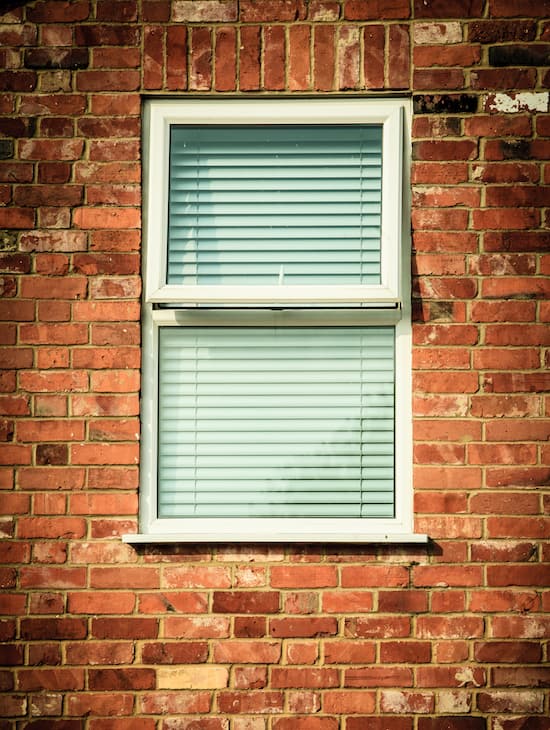
Concrete Lintels
If your concrete lintel is suffering from horizontal cracks, then you need to deal with the crack itself. This is because water can get into the crack and cause the steel reinforcement within the concrete to rust. The expansion of the rust can cause the concrete to break up. You should look at different concrete repair products or at replacing the lintel altogether.
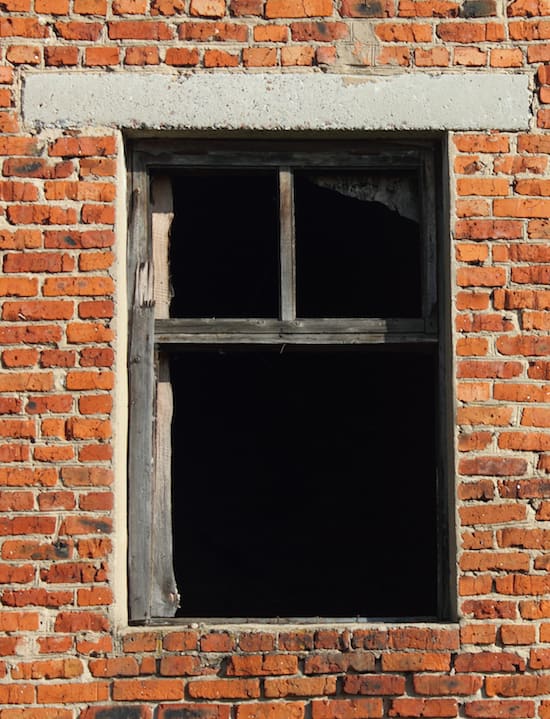
Example of concrete lintel above a window
Metal Lintels
Over time metal lintels including those made of steel will corrode to some extent. As the metal corrodes, it expands which causes the render to crack. You will need to fill this crack with a resin injection to protect it. This should prevent further damage to the lintel.
Timber Lintels
Where timber lintels are used, often in older properties, you are at risk from wood rot (wet and dry) as well as wood boring beetles. This can affect the structural integrity of the timber and mean that need you to replace or repair them using helical spiral bars as outlined in this guide.
Window Lintel Repair
The best way to carry out window lintel repairs is with helical bars. These reinforcement bars can be used with brick or masonry lintels. Once installed these stainless steel bars improve strength with minimum disruption.
Helical bars are a welcome alternative to installing a new lintel. The installation of a new lintel requires brickwork to be removed and replaced, and the masonry above the opening to be supported with props during this process. It is costly and disruptive.
How to Use Helical Bars for Lintel Repairs
These steel rods effectively re-engineer your existing brickwork into a beam. They can be used on brick arch lintels too with the use of additional grouted ties.
How do Helical Bars work?
When correctly installed, the helical bars and cementitious anchor grout are bound together so strongly with the masonry that they effectively create a single masonry beam. This beam has excellent load-bearing capacity and is able to support the brickwork above, as well as spreading the structural loads. The slot for the stainless steel bar is cut to a specific depth in order to provide the best continuous interlocking with the grout.
With the addition of a second bar, the stress forces that act on the lintel are further redistributed. The tensile strength exhibited by a lintel reinforced with a helical bar surpasses the alternatives, often many times over. With the lintel restored, you remove the risk of the lintel failing and any dangerous repercussions.
Installing Helical Bars for Lintel Repairs
The installation of helical bars is relatively quick and easy. All works are carried out externally, which minimises disruption to homeowners.
We have broken down the installation into simple easy to follow steps. The installation method outlined below applies to both window and door lintels. It is strongly recommended that you install helical bars at two levels above the failed lintel.
Helical bars when used for lintel repairs are available in three and seven metre lengths. These longer lengths allow the bars to extend beyond the window or door by the required 500mm. You can also cut the longer lengths to the exact size required.
Step One – Chasing out & Cleaning Slots
Using a wall chaser, cut or chase out a slot in the horizontal mortar bed above the first course of bricks, sitting directly above the lintel.
For brick arch lintels, the slot should be cut in the horizontal mortar bed that runs directly above the crown of the arch.
You need to cut out just over 500mm either side of the opening and above the window or door. You need to cut the slot to the correct depth, dependent on the wall thickness. See the below chart:
| Wall Thickness | Depth of Slot | Depth of Bar |
|---|---|---|
| 102mm | 30mm | 20mm |
| 215mm | 40mm | 30mm |
Remove the mortar including any loose materials before flushing the joint with clean water.
Two – Anchor Grout
Mix the Anchoring Grout thoroughly using a paddle mixer. Load the grout into a pointing gun.
Pump the grout to the back of the slot in a continuous even bead to approximately two thirds of the slot depth.
Three – Insert the First Bar
Push the helical bar firmly into the grout to around two thirds of the depth of the slot. Make sure that the bar extends 500mm either side of the window or door.
Four – Insert the Second Bar
Apply a second bead of anchor grout into the slot, making sure that the first bar is completely covered. Trowel away any excess grout before adding the second helical bar. This bar should reach around half the depth of the slot and be at least 10mm from the first bar.
You now need to apply a further bead of grout until it is approximately 10mm from the surface. Make sure the bars and grout are firmly packed.
YOU SHOULD REPEAT THIS PROCESS FOR THE SECOND LEVEL. THE SECOND LEVEL IS CREATED BY CUTTING ANOTHER SLOT FOUR COURSES ABOVE THE FIRST USING EXACTLY THE SAME METHOD.
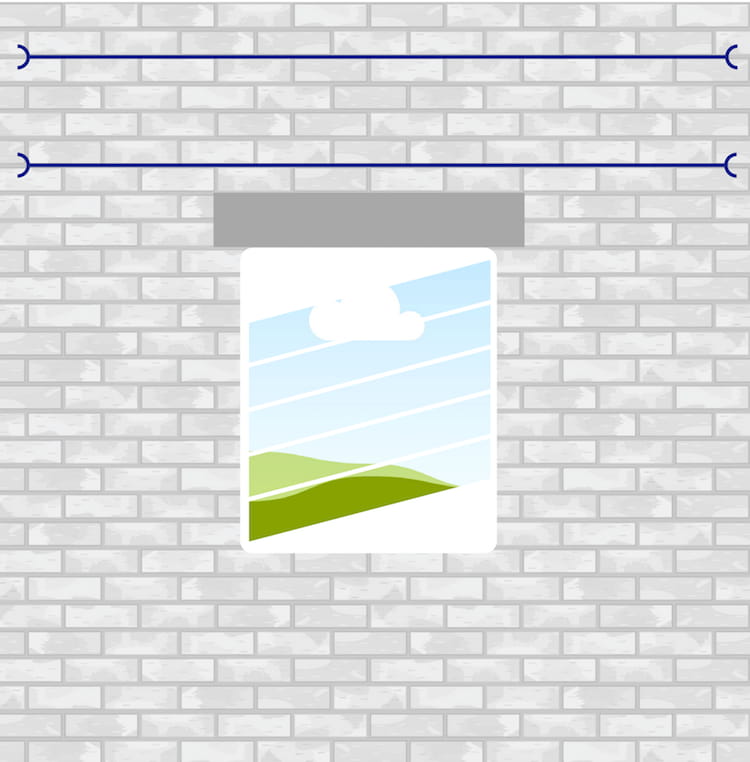
Positioning of the second helical bar for window lintel repair
Five – Making Good
Finish by making good the slot and filling the vertical crack with an appropriate filler to match. By using the right filler to repoint, you should leave no evidence of the repair work.
What grout to use in lintel repair?
You will need a grout to secure the helical bars in place. At Permagard, we suggest PermaCEM anchor grout due to its high strength. This cement-based anchoring grout provides a powerful bond and imparts long-term stability, maintaining maximum contact with the brickwork. It can be mixed in the exact quantities required to save waste.
What to do internally when carrying out lintel repairs?
We have focussed on how to repair a lintel externally. Now we will take a look at what to do internally. The best course of action is determined by the severity of the cracks and if they run through to the internal leaf of your cavity wall.
Cracks that go through to the internal leaf
If the cracks are evident on the internal leaf of a cavity wall, then you need to repeat the process and create a new lintel / beam internally. You should also ensure that there are enough wall ties between the two leaves to allow for the correct and safe transferring of load.
The best way to do this is with an inspection to appraise if there are sufficient walls ties. With a cavity wall, you should be able to carry out a visual inspection, looking between the inner and outer leaves. If you are unable to get a good view of the existing wall ties and their frequency then you can use a metal detector or an endoscope camera.
You will need to add or replace wall ties if there are not enough or the existing ties are corroded to provide structural stability. Our guide to wall tie installation takes you through the correct spacing and installation of wall ties.
No cracks on the internal leaf
If there is no evidence of cracking on the internal leaf, then you don’t need to install a beam internally. You will however need to inspect the wall ties as per the above. If there are not sufficient wall ties between the two leaves, you should install remedial wall ties as required.
Creating a Lintel
No Lintel
Sometimes lintels don’t exist in the first place. When there isn’t a lintel above a window, it usually means the masonry was built directly onto the window frames. In this instance you can create a new lintel using helical bars. You can do this by installing two levels of helical bars using the method outlined above.
Installing helical bars in this way enables you to form a lintel within the existing brickwork. It is a cheaper and easier repair than installing a new concrete or metal lintel, which is expensive and very disruptive.
Lintel repair costs
The use of helical bars for lintel repair or creating a new lintel is the most cost-effective approach. The cost of lintel repair is reduced dramatically because of the ease of repair and how quick it is to install the bars.
The alternatives often involve removing brickwork and mechanically supporting the surrounding masonry. This makes it a big, costly and often difficult job. You then have the aesthetic issues with replacing the removed brickwork with new courses that may look different. With the helical bar method, there is no need to replace the lintel or rebuild any of the masonry as it uses the existing brickwork.
The following helical bar options are available from Permagard (pricing may have changed):
You can buy our lintel repair helical bars in bulk to save.
Bars can also be purchased individually:
The bars can be fixed with PermaCEM Anchor Grout.
If you have the required tools, the total costs of lintel repair can be very affordable. Combining the costs of the helical reinforcement bars and anchor grout, it can be from as little as £100 to repair one window lintel. This does not include labour.
Permagard – Structural Repair Experts
If you have any questions about masonry cracks or any other structural repairs, contact our team on 0117 982 3282 for free technical advice.
If you want to know how helical bars can be used for crack stitching to repair wall cracks, then read our guide.

